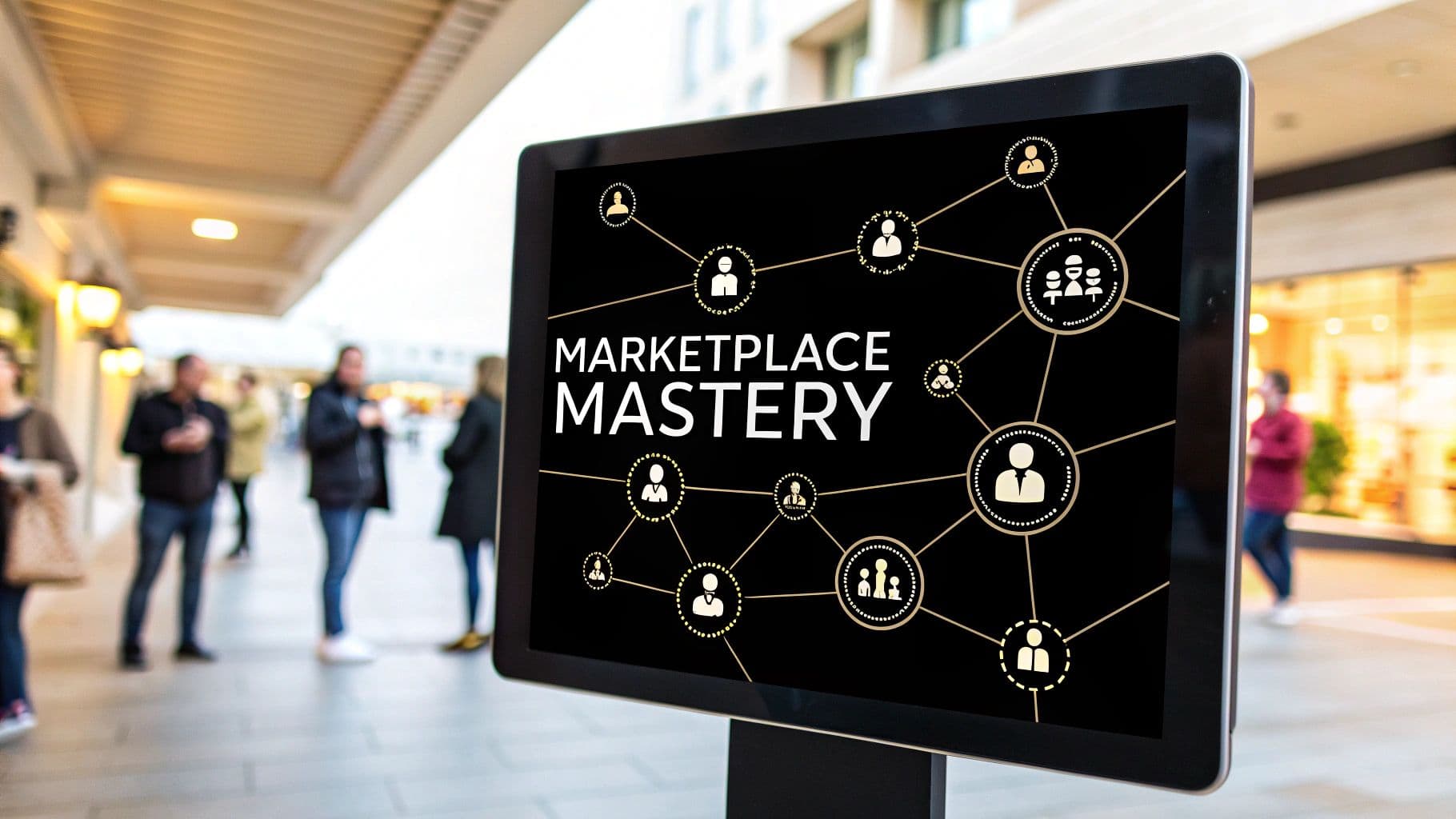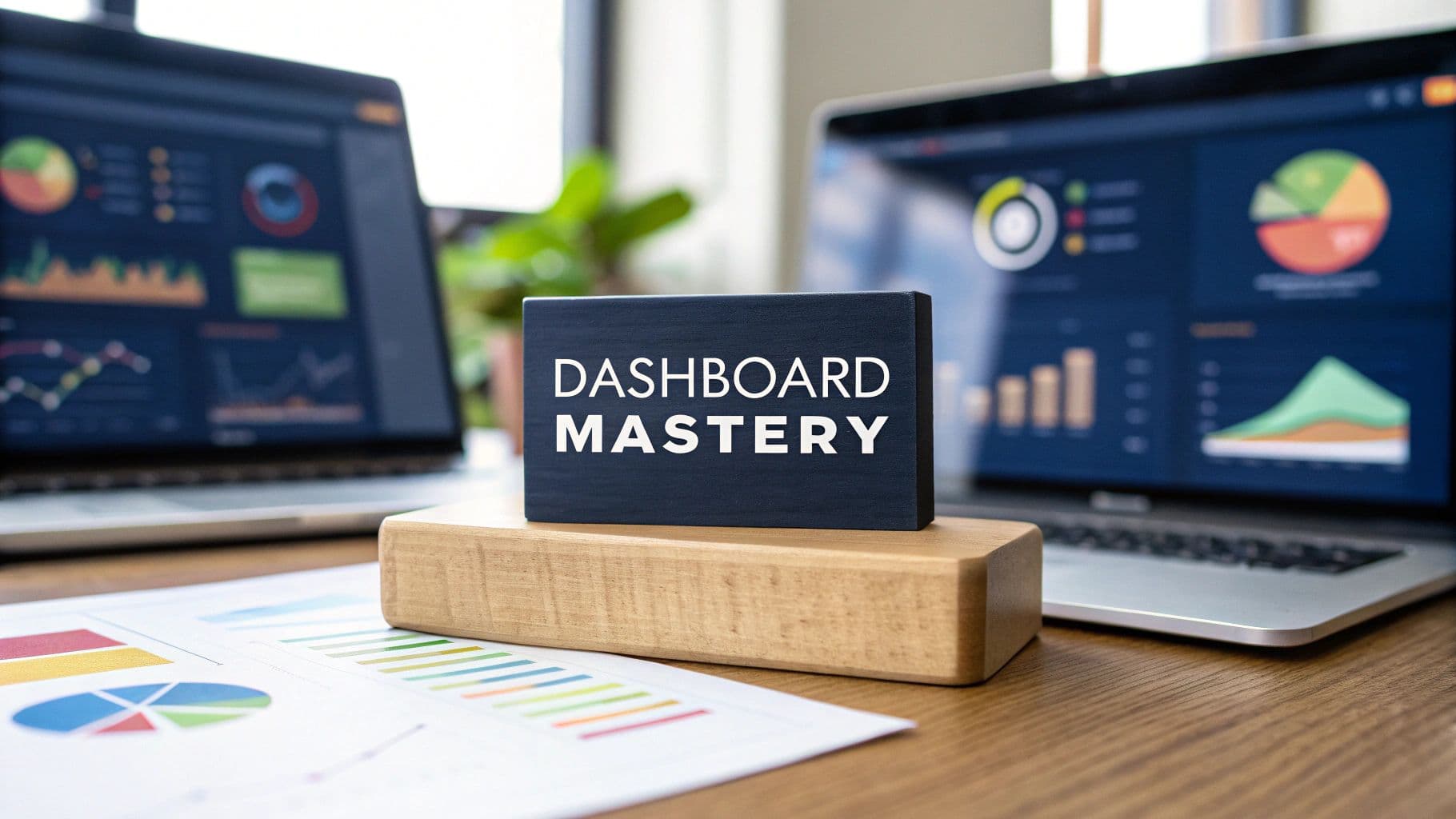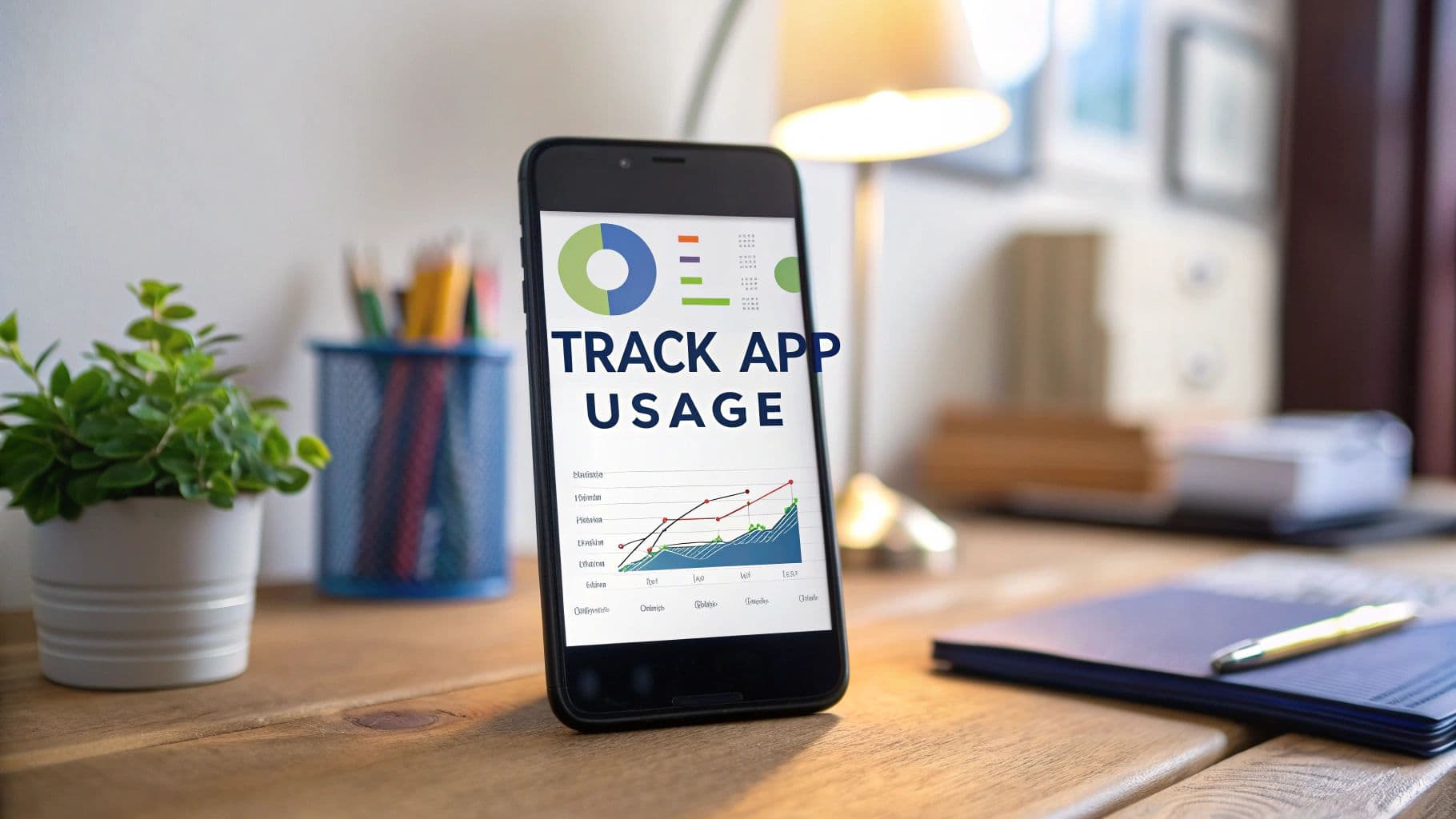10 Marketplace Growth Strategies to Dominate in 2025
Discover 10 actionable marketplace growth strategies. Our deep dive covers acquisition, retention, and monetization for SaaS product and growth teams.

In a competitive landscape, building a successful marketplace requires more than just connecting buyers and sellers; it demands a sophisticated, multi-faceted approach. The primary challenge has shifted from simply launching to achieving sustainable scale. This means navigating the delicate balance of supply and demand, fostering user trust, and engineering an ecosystem that grows exponentially on its own.
For SaaS product and growth teams, the pressure to deliver this kind of growth is immense. Success requires moving beyond generic advice and embracing specific, actionable marketplace growth strategies that are proven to drive measurable results. This comprehensive guide is designed to provide just that. We will dissect 10 powerful strategies, offering a deep dive into the mechanics of each one, complete with real-world examples and practical implementation steps.
You will learn how to architect powerful network effects, structure two-sided incentives that attract both supply and demand, and leverage data for hyper-personalized user experiences. We will cover vertical expansion, community building, and the critical role of trust and safety as a core growth driver. These insights are tailored to equip product managers, growth leaders, and technical teams with the strategic tools needed to not just compete, but to build a dominant and defensible marketplace. This is the modern playbook for unlocking hyper-growth.
1. Master Network Effects to Create an Unbeatable Moat
The most powerful marketplace growth strategies are built on a simple, yet profound, principle: the platform becomes more valuable as more people use it. This is the essence of network effects. For every new seller that joins a platform like Amazon, buyers get more selection, which in turn attracts more buyers, creating an irresistible draw for even more sellers. This self-reinforcing loop is what transforms a simple platform into a defensive moat, making it incredibly difficult for new competitors to gain a foothold.
Unlike linear businesses that must perpetually pay to acquire each new customer, marketplaces with strong network effects see their customer acquisition cost (CAC) decrease over time. The network itself becomes the primary growth engine. This creates exponential, not just incremental, growth, turning your user base into your most valuable asset.
How to Implement This Strategy
Successfully engineering network effects requires a deliberate focus on solving the "chicken-or-egg" problem and then amplifying user value.
- Focus on a Niche First: Instead of launching globally, concentrate on building critical mass in a single vertical or geographic location. Uber famously focused on San Francisco, and Airbnb targeted hosts attending specific events like the Democratic National Convention. This creates "network density," where users in that niche experience the platform's full value, kicking off the growth loop.
- Subsidize One Side of the Market: To kickstart the network, you often need to artificially create value. This can mean offering incentives, discounts, or subsidies to the harder-to-acquire side of the marketplace. For example, a food delivery service might offer free delivery to customers or waive commission fees for the first few months for restaurants.
- Build Features That Enhance Interaction: Your product roadmap should prioritize features that increase the value of connections. Think of eBay's seller ratings or Airbnb's host-guest messaging system. These tools build trust and make transactions smoother, strengthening the bonds within the network and creating high switching costs.
2. Implement Strategic Two-Sided Market Incentivization
At its core, a marketplace is an empty room until both buyers and sellers arrive. The strategic use of incentives is one of the most effective marketplace growth strategies for filling that room. This approach directly tackles the "chicken-or-egg" dilemma by artificially boosting the value proposition for one or both sides of the market, creating the initial momentum needed for network effects to take over.

Unlike organic growth, which can be slow and unpredictable, incentivization is a deliberate act of investment. It's about spending capital to manufacture early liquidity. Uber offered significant sign-up bonuses to drivers (supply) and free ride credits to passengers (demand) to rapidly build density in new cities. Similarly, DoorDash often waives commission fees for new restaurants while offering delivery discounts to customers, making the platform irresistible to both sides simultaneously.
How to Implement This Strategy
A successful incentive program requires a delicate balance between aggressive growth and financial sustainability. It's about subsidizing the right side at the right time.
- Subsidize the More Difficult Side: Identify which side of your market, supply or demand, is harder to acquire and concentrate your resources there. For a platform like Upwork, attracting skilled freelancers (supply) is the primary challenge, so incentives like lower service fees or featured profiles are crucial. This high-quality supply then naturally attracts businesses seeking talent.
- Use Time-Limited Offers to Drive Urgency: Create a sense of FOMO (fear of missing out) with temporary promotions. PayPal's famous early strategy of offering $10 referral bonuses to both the referrer and the new user was wildly successful because it encouraged rapid adoption before the program ended. This creates a powerful, short-term burst of growth.
- Monitor Unit Economics and Plan for a Taper: Incentives are a short-term catalyst, not a long-term business model. Constantly track your customer acquisition cost (CAC) and lifetime value (LTV) to ensure your burn rate is sustainable. As the marketplace gains traction and network effects strengthen, you must have a clear plan to gradually reduce and eventually phase out the initial subsidies.
3. Vertical Integration and Expansion
Once a marketplace establishes liquidity, one of the most powerful marketplace growth strategies is to move beyond being a simple intermediary. Vertical integration involves taking control of key parts of the value chain, transforming your platform into a comprehensive, end-to-end service provider. Instead of just connecting buyers and sellers, you begin to own adjacent services like payments, logistics, or financing, capturing more value from each transaction.

This approach creates immense customer stickiness and a formidable competitive moat. When Shopify expanded from just an e-commerce platform into payments (Shopify Payments) and logistics (Shopify Fulfillment Network), it solved major pain points for its sellers. This made its ecosystem incredibly difficult to leave. Similarly, Uber's expansion from ridesharing into food delivery (Uber Eats) leveraged its existing network of drivers and customers to enter a new, high-frequency market.
How to Implement This Strategy
Successful vertical expansion requires identifying and solving the biggest friction points in your user's journey beyond the core transaction.
- Identify High-Friction Points: Use data and user feedback to pinpoint the most challenging parts of the customer journey that happen off-platform. For an e-commerce marketplace, this is often shipping and returns. For a freelance platform, it might be invoicing and payments.
- Start with Complementary Services: Initially, launch services that enhance, rather than compete with, your existing partners. Before building its own logistics, Amazon created Fulfillment by Amazon (FBA), a service that empowered its third-party sellers and made selling on the platform easier.
- Leverage Data for Expansion Opportunities: Your marketplace data is a goldmine for identifying what your users need next. Square saw that its merchants were seeking capital and used its transaction data to create Square Capital, offering loans based on sales history, a service traditional banks couldn't easily replicate.
4. Geographic Market Expansion
Once a marketplace has achieved product-market fit and network density in its initial location, one of the most powerful marketplace growth strategies is systematic geographic expansion. This involves launching the platform in new cities, regions, or countries, replicating the initial success on a larger scale. This strategy allows a marketplace to tap into new user bases and revenue streams, significantly increasing its total addressable market and solidifying its brand presence.

Unlike purely digital growth tactics, geographic expansion requires a deep understanding of local nuances, from regulations and payment methods to cultural expectations. Success stories like Airbnb's expansion into over 220 countries and Uber's city-by-city rollout demonstrate that a well-executed expansion playbook can lead to global dominance. This approach leverages the core platform and learnings from the home market while adapting operations to fit local conditions.
How to Implement This Strategy
A successful expansion is a disciplined, data-driven process, not a blind land grab. It requires balancing speed with meticulous localization to ensure the model works in a new context.
- Create a Repeatable Expansion Playbook: Document the exact steps, metrics, and resources needed to launch in a new market. This should cover everything from initial market research and legal due diligence to the "first 100 users" acquisition plan. This playbook, refined with each new launch, becomes a critical company asset.
- Adapt to Local Conditions: A one-size-fits-all approach rarely works. Invest heavily in localizing the platform, including language, currency, and payment gateways. For example, a ride-sharing app expanding to Southeast Asia must integrate with popular local e-wallets, not just credit cards. This often means hiring a local team or "city launcher" who understands the market intimately.
- Prioritize Markets Strategically: Don't expand everywhere at once. Analyze potential markets based on factors like population density, regulatory environment, competitive landscape, and similarity to your proven markets. Prioritize "lookalike" cities or regions first to increase the probability of a successful launch before tackling more complex and different markets.
5. Leverage Data-Driven Personalization and Matching
In a crowded market, the platforms that win are those that most effectively connect supply with demand. This is where data-driven personalization and matching becomes one of the most powerful marketplace growth strategies available. By leveraging user data, machine learning, and AI, marketplaces can move beyond simple search filters to create highly relevant, personalized experiences that dramatically improve transaction success rates and user satisfaction.
This strategy transforms raw data into a competitive moat. The more transactions that occur on your platform, the more data you collect, and the smarter your matching algorithms become. This creates a virtuous cycle similar to network effects, where the user experience for both buyers and sellers continuously improves, making it harder for competitors to match the quality of your service. Amazon's recommendation engine, which reportedly drives up to 35% of its sales, is a testament to the power of effective personalization.
How to Implement This Strategy
Implementing a data-driven approach requires a commitment to collecting, analyzing, and acting on user behavior from the very beginning.
- Build a Robust Data Infrastructure: From day one, track every significant user interaction: clicks, searches, session duration, purchase history, and message content. This foundational data is the fuel for any future machine learning models. Invest in data warehousing and analytics tools that can scale with your growth.
- Start with Simple Algorithms: You don’t need a complex AI model to begin. Start with rule-based systems, such as showing users items related to their past purchases or boosting the visibility of sellers with high ratings. Airbnb’s initial search ranking was based on simple heuristics before evolving into its sophisticated machine learning-powered model.
- A/B Test Everything: Every change to your matching or recommendation algorithm should be rigorously tested. Measure its impact not just on click-through rates but on core business metrics like conversion rates, user retention, and average transaction value. This ensures your personalization efforts are genuinely improving the marketplace.
6. Build a Community That Becomes a Competitive Advantage
One of the most enduring marketplace growth strategies involves transforming your user base from a collection of transactional participants into a vibrant, engaged community. This approach focuses on fostering connections between users, encouraging them to create content that enriches the platform for everyone. A strong community not only drives retention and loyalty but also generates a powerful, organic marketing engine.
Instead of just facilitating transactions, community-led marketplaces like Etsy create a space where sellers share tips and buyers discover unique artisans. This user-generated content, from forum posts to project showcases, builds an ecosystem that is incredibly difficult for competitors to replicate. The value of the platform extends beyond the transaction to include belonging, learning, and discovery, which are powerful drivers of long-term engagement.
How to Implement This Strategy
Building a thriving community requires a dedicated effort to create spaces for interaction and a culture of contribution. It’s a long-term investment that pays compounding dividends.
- Create Dedicated Spaces for Interaction: Establish forums, groups, or dedicated channels where users can connect. Etsy's "Teams" allow sellers with shared interests to collaborate, while Behance provides a platform for creative professionals to showcase portfolios and give feedback. These features turn passive users into active contributors.
- Invest in Community Management: A community doesn't manage itself. Hire dedicated community managers to facilitate discussions, enforce guidelines, and act as a bridge between the users and your product team. This role is crucial for nurturing a positive and constructive environment from day one.
- Recognize and Reward Top Contributors: Implement systems to highlight and reward your most active and helpful community members. This could be through badges, special access, or featuring their content. GitHub's "Star" system on repositories and Reddit's karma are classic examples that incentivize high-quality, user-generated content.
7. Implement a Mobile-First and Omnichannel Strategy
In today's market, growth is no longer confined to a single platform. A mobile-first and omnichannel approach acknowledges that the modern customer journey is fragmented across devices. This strategy prioritizes a seamless, high-quality mobile experience as the foundation and then ensures that user experience remains consistent and connected across web, social media, and even physical touchpoints. This is a critical marketplace growth strategy because it meets users where they are, reducing friction and capturing engagement at every opportunity.
For marketplaces, this means a user can discover a product on an Instagram ad, browse it on a mobile app during their commute, and complete the purchase later on a desktop. Companies like Poshmark and Mercari have built empires on this principle, understanding that the smartphone camera is the new storefront and that social sharing is the new word-of-mouth. This unified experience builds user loyalty and maximizes lifetime value by making the platform an integrated part of a user's daily life.
How to Implement This Strategy
A successful omnichannel strategy goes beyond simply having a mobile app. It requires a deep integration of design, technology, and data to create a single, fluid customer journey.
- Design for Mobile, Adapt for Others: Start the product design process with the smallest screen first. This forces you to prioritize core features and create a clean, intuitive user interface. This streamlined experience can then be progressively enhanced for larger screens like tablets and desktops, ensuring a solid foundation.
- Leverage Cross-Device Analytics: Use analytics tools to map user journeys across different platforms. Understanding how users transition from your mobile app to your website (and back) reveals critical friction points and opportunities. This data is essential for creating a truly seamless and personalized experience.
- Utilize Mobile-Specific Features: Enhance the marketplace experience by integrating features native to mobile devices. Use the camera for easy product listing, GPS for location-based recommendations, push notifications for timely updates, and biometrics for secure, one-tap payments. These features create a more convenient and engaging platform that a web-only experience cannot match.
8. Strategic Partnerships and Ecosystem Integration
No marketplace exists in a vacuum. One of the most scalable marketplace growth strategies involves tapping into established user bases and value chains by forming strategic alliances with complementary businesses. Instead of building every feature or acquiring every user from scratch, you can leverage the ecosystem around you. This approach accelerates growth by integrating your marketplace into the existing workflows and platforms your target audience already uses and trusts.
This strategy transforms competitors and adjacent players into powerful growth channels. By creating mutually beneficial relationships, you expand your reach, enhance your value proposition, and embed your service deeper into the industry. Think of Shopify's app ecosystem; it doesn't just sell an e-commerce platform, it offers a central hub connected to thousands of third-party logistics, marketing, and finance tools, making it indispensable for merchants.
How to Implement This Strategy
Effective partnerships are built on shared value and seamless integration, not just co-marketing agreements. This requires a deliberate and strategic approach to building an interconnected ecosystem.
- Identify Complementary Workflows: Map out your users' journey and identify the tools and services they use before, during, and after interacting with your marketplace. A marketplace for freelance designers could partner with project management tools like Asana or time-tracking software like Harvest to create a seamless workflow.
- Invest in API and Integration Quality: A partnership is only as good as its technical execution. Develop robust, well-documented APIs that make it easy for partners to integrate with your platform. Stripe’s success is a testament to this, with its developer-first approach making it the default payment provider for countless other platforms and marketplaces.
- Establish Clear Win-Win Scenarios: Define what success looks like for both you and your partner. This could be a revenue-sharing agreement, a lead-generation referral program, or a co-development project. Ensure the terms are clear, and metrics for success are tracked transparently to maintain a healthy, long-term relationship.
9. Freemium and Tiered Value Proposition
One of the most effective marketplace growth strategies for reducing initial friction is to offer a core service for free while charging for premium features. This freemium model allows you to rapidly acquire a large user base by eliminating the upfront cost barrier. Once users see the platform's value, they can be strategically upsold to tiered plans that offer advanced tools, greater capacity, or enhanced visibility, creating a sustainable revenue model that scales with their success.
Unlike a free trial, a freemium offering provides permanent value, making it a powerful acquisition tool. This approach turns your product into its own top-of-funnel marketing engine, as seen with platforms like Canva, which attracts millions with its free design tools before upselling them on premium templates and team features. This strategy builds a massive community and a rich data set to inform product development and monetization.
How to Implement This Strategy
Successfully deploying a freemium model requires a delicate balance between offering enough value to attract users and holding back enough to incentivize upgrades.
- Design the Free Tier to Showcase Value: Your free offering should solve a real problem and demonstrate the platform's core functionality. It must be valuable enough on its own to drive adoption and word-of-mouth growth. However, it should have clear, natural limitations (e.g., number of listings, access to advanced analytics) that users will eventually outgrow.
- Identify Upgrade Triggers with Data: Analyze user behavior to pinpoint the moments when a user's needs exceed the free tier's capabilities. For a platform like Mailchimp, this trigger might be when a user’s email list grows beyond 500 subscribers. Prompting an upgrade at this exact point of need dramatically increases conversion rates.
- Create Clear Value Differentiation Between Tiers: The benefits of upgrading must be obvious and compelling. Don't just offer more of the same; provide distinct capabilities that solve bigger problems. For example, LinkedIn’s free version is for basic networking, while its premium tiers unlock powerful tools specifically for recruiters, sales professionals, and job seekers.
10. Trust and Safety as a Growth Driver
In a marketplace, transactions happen between strangers. This inherent uncertainty can be a massive barrier to growth. The most enduring marketplace growth strategies transform this vulnerability into a strength by engineering trust. By positioning safety and security as a core product feature, not an afterthought, you create an environment where users feel confident enough to transact, turning trust into a powerful acquisition and retention tool.
This approach goes beyond basic fraud prevention. It involves building a comprehensive trust infrastructure that is visible, reliable, and central to the user experience. When users feel protected, they are more likely to complete their first transaction, return for future purchases, and recommend the platform to others. Platforms like Airbnb and Uber don't just facilitate connections; they sell peace of mind, making their trust mechanisms a key competitive differentiator.
How to Implement This Strategy
Building trust requires a multi-faceted approach that integrates technology, policy, and user experience design to create a secure environment.
- Make Safety Features Highly Visible: Don't hide your trust initiatives. Promote features like Airbnb's Host Guarantee, eBay's Money Back Guarantee, or Uber's driver background checks prominently throughout the user journey. These signals build confidence at critical decision-making points and justify why a user should choose your platform over a less secure alternative.
- Balance Security with a Seamless User Experience: While robust security is vital, excessive friction can deter users. Implement measures like real-time ID verification or two-factor authentication in a way that feels reassuring rather than cumbersome. The goal is to make users feel protected without making the platform difficult to use.
- Invest in Proactive Education and Transparent Communication: Use educational content, tooltips, and onboarding flows to inform users about safety best practices. If a security incident occurs, communicate transparently about what happened and the steps being taken to resolve it. Honesty, even when things go wrong, is crucial for maintaining long-term user trust.
Marketplace Growth Strategies Comparison
| Strategy | Implementation Complexity 🔄 | Resource Requirements ⚡ | Expected Outcomes 📊 | Ideal Use Cases 💡 | Key Advantages ⭐ |
|---|---|---|---|---|---|
| Network Effects Strategy | High - requires critical mass | High - upfront investment | Exponential value growth, viral loops | Marketplaces needing viral growth & user synergy | Sustainable advantage, increasing returns |
| Two-Sided Market Incentivization | High - complex balancing act | High - costly subsidies | Rapid liquidity, market penetration | Early-stage marketplaces solving supply-demand gap | Solves chicken-egg problem, accelerates growth |
| Vertical Integration and Expansion | Very High - operationally complex | Very High - capital and tech heavy | Higher margins, stronger differentiation | Marketplaces aiming for control & service expansion | Increased customer lifetime value, multiple revenue streams |
| Geographic Market Expansion | High - regulatory & cultural adaption | High - localization & compliance | Market diversification and scale | Marketplaces expanding internationally | Massive market expansion, first-mover advantage |
| Data-Driven Personalization | Very High - requires advanced AI/ML | High - technical & data infrastructure | Improved matching, efficiency, satisfaction | Platforms leveraging data for competitive edge | Higher conversion, superior matching |
| Community Building and UGC | Medium - ongoing moderation needed | Medium - community management | Increased engagement, loyalty | Platforms relying on user interaction & retention | Organic growth, strong loyalty |
| Mobile-First and Omnichannel | High - multi-platform coordination | High - development & maintenance | Seamless user experience, higher engagement | Mobile-centric marketplaces & multi-channel users | Capture mobile commerce, real-time engagement |
| Strategic Partnerships | Medium to High - coordination needed | Medium - partner enablement | Accelerated user acquisition | Platforms leveraging ecosystems & alliances | Reduced acquisition costs, expanded reach |
| Freemium and Tiered Value Prop. | Medium - designing tiers and funnels | Medium - supporting free & paid | User adoption and monetization balance | SaaS or marketplaces with tiered user needs | Low entry barrier, multiple revenue streams |
| Trust and Safety as Growth Driver | Medium to High - security systems | Medium to High - ongoing monitoring | Increased transaction volume, user trust | Trust-sensitive marketplaces (e.g., sharing economy) | Higher confidence, premium pricing, fraud reduction |
From Strategy to Execution: Building Your Growth Engine
Navigating the complex world of marketplace growth requires more than just a good idea; it demands a strategic, multi-faceted approach. We've journeyed through ten distinct yet interconnected marketplace growth strategies, from igniting initial traction with two-sided incentivization to establishing long-term dominance through powerful network effects and community building. Each strategy represents a critical lever you can pull, but the true art lies in knowing which lever to pull, when, and how hard.
The path to building a scalable, resilient marketplace is not linear. It's a dynamic process of layering these strategies to create a self-reinforcing growth engine. You might start by solving the initial chicken-and-egg problem, then quickly shift focus to fostering trust and safety to ensure early users have a positive experience. As liquidity builds, you can leverage data-driven personalization to enhance matching, which in turn strengthens network effects and user retention.
Key Takeaways: From Individual Tactics to an Integrated System
The most successful platforms don't treat these strategies as a checklist. Instead, they weave them into the very fabric of their operations, creating a system where each component amplifies the others.
- Interconnectivity is Everything: Your community-building efforts directly fuel trust and safety. Your data-driven matching algorithm makes your vertical expansion more successful. No strategy exists in a vacuum; they are all part of a larger, cohesive growth machine.
- The User is the North Star: From incentivization models to mobile-first design, every decision must be rooted in a deep understanding of both your supply-side and demand-side users. What are their core motivations? Where do they experience the most friction? Answering these questions is the foundation of effective strategy.
- Trust is the Currency: Strategies like fostering community, implementing robust safety protocols, and ensuring transparent monetization are not just "nice-to-haves." In a marketplace model, they are foundational pillars that build the user confidence necessary for transactions to occur and for network effects to take hold.
Your Actionable Roadmap for Marketplace Growth
Moving from theory to practice can feel daunting. The key is to start with a focused, data-informed plan. Don't try to implement all ten strategies at once. Instead, identify the one or two that will solve your most immediate challenges and unlock the next stage of growth.
- Diagnose Your Current Stage: Are you still struggling to attract your first users (focus on Incentivization and Network Effects Seeding)? Or are you battling churn and low engagement (prioritize Community Building and Data-Driven Personalization)?
- Identify Your Biggest Bottleneck: Analyze your user journey. Where do users drop off? Is it during onboarding? Is it at the point of transaction? Your biggest point of friction is your first strategic target.
- Listen to Your Users at Scale: Your users are constantly telling you what they need through support tickets, reviews, and usage patterns. The challenge is converting this mountain of qualitative feedback into a clear, quantifiable roadmap. This is the critical link between user needs and strategic execution.
Ultimately, mastering these marketplace growth strategies is about building a platform that creates compounding value. Each new user should make the platform more valuable for every other user, creating a powerful moat that is difficult for competitors to cross. This isn't just about getting bigger; it's about getting stronger, more efficient, and more indispensable to the community you serve. The journey requires patience, precision, and a relentless focus on delivering value, turning your marketplace from a simple platform into a thriving, self-sustaining ecosystem.
Are you ready to turn user feedback into your most powerful growth asset? SigOS uses AI to analyze customer conversations and product usage data, helping you pinpoint the exact features and fixes that will drive retention and unlock expansion revenue. Stop guessing what to build next and start executing on a data-backed roadmap by visiting SigOS.
Keep Reading
More insights from our blog


